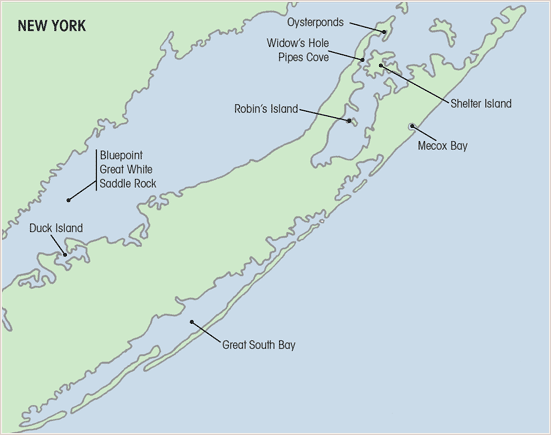New York and Connecticut
Oysterponds
Oysterponds are the epitome of East End oysters. They have the classic umber-and-black shells, which in my experience always yield a particularly savory oyster with a refreshingly tannic, cast-iron bite. They have an oceanic salinity of 32 ppt and are always at least four inches. Oysterponds grow so fast—note the soft lip on the bill—that they have the thin shells that also seem to characterize East End oysters. Shuck with care. Like most northeastern oysters, they are good in September, great in November, and stay good through March or April. Other East End oyster farmers grow their oysters by leasing bottomland in various spots of Peconic and Gardiner’s Bays, dropping large metal cages filled with oysters about ten feet deep onto the leases, and later hauling them up with winches attached to boats. That’s what you do when you don’t have particularly good oyster habitat. Oysterponds, however, are different. The ponds themselves are an estuary separated from Gardiner’s Bay by grasses and sand dunes. Cutting through the dunes at a five-knot clip is a salt creek that runs with the tides, exchanging all its water every few hours, unlike most estuaries, which can take six months for full turnover. The creek is crystal clear, just a few feet deep, and burgeoning with life. The oyster farm is gloriously low-tech. No dredges, no floating trays, no divers, no boats. Just rebar “tables” sitting a foot off the bottom with bags of oysters attached. That’s it.

